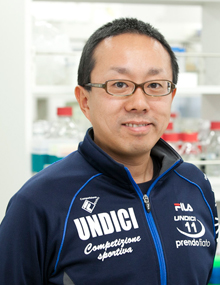
We wish to clarify the molecular mechanisms underlying global facultative heterochromatin formation during early mouse embryogenesis, with the belief that understanding the developmental regulation of higher-order chromosome organization will lead to a deeper understanding of cell differentiation.
The term facultative heterochromatin refers to chromosomal regions that condense, become inactivated, and are stably maintained in this manner after a certain developmental stage. A classic example is the inactive X chromosome in mammals, which becomes detectable immediately prior to the formation of germ layers and is stably maintained thereafter in all downstream lineages. Intriguingly, we recently discovered that many autosomal domains also undergo a similar process of facultative heterochromatin formation at the same developmental stage, which accounts for more than 6% of the genome. This suggests that facultative heterochromatin formation at this stage is not specific to the inactive X, but is rather a more widespread phenomenon affecting the entire genome. Recent studies have also revealed low reprogramming efficiency of cells immediately after this developmental stage, already as low as downstream somatic cell types. Thus, this facultative heterochromatin is a common epigenetic feature of all somatic cells beyond the germ layer formation stage, and the reprogramming experiments imply a potential link to the cell’s differentiated state.
For these reasons, we combine genome-wide approaches with molecular and cell biology and imaging techniques to elucidate the molecular mechanisms underlying the facultative heterochromatin formation process. In the future, we will address the biological significance of this phenomenon and eventually wish to understand the fundamental implications of higher-order chromosome organization.

A:…
A:…
A:…
A:…
A:…
A:…
A:…
A:…
hiratani[at]cdb.riken.jp
